
| Welcome to my Auburn hiking web page |
|---|
| Home | Gallery |
| Hiking |
Welcome to my web page for the Auburn hike. This is another trail out of the Passport to Fitness program. I hiked around the city of Auburn, AL. on Saturday (July 24, 2010). This walk starts out just south of downtown at Town Creek Park. This is a small park with a couple of pavilions and picnic tables. There's a couple of trails but I didn't walk them to see how long they were or where they went. Judging by the old grain silo here I would assume that this used to be a pasture. From the park you walk up to the Julie Collins Smith Museum. Then you head North past the university and into downtown. After walking around downtown you head back South to the park. The walk is about 5 miles long and is fairly level, so it's not too difficult. Be sure to take plenty of water if you do like I did and walk in the summer. It was about 85 when I started around 10:00 and by the end of the walk (around 1:00 p.m.) it was in the mid- to high 90s. You will find pictures and descriptions from my walk below. If you have any comments or questions please feel free to drop me an email through the link below. Enjoy! :) |
| Here's the entrance sign to the park. You can use the following coordinates to get to this park: N 32° 35' 05.0" W 085° 28' 29.4". The nearest address is 1172 South Gay Street, Auburn, AL 36830. |
 |
About a mile into the walk you come to the Julie Collins Smith Museum of Fine Art. I didn't go in but I understand there is a fine collection of paintings in the Museum. Across the street from the museum some crops were planted and out towards the southern edge appeared to be another park. There is a historical marker at the edge of the crops. It reads, "THE ALVIS FIELD AND COTTON RUST On the reverse the sign reads, |
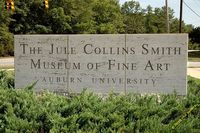 |
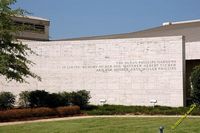 |
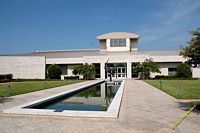 |
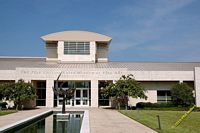 |
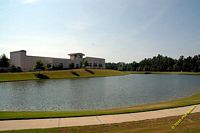 |
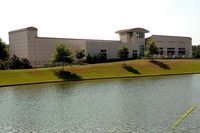 |
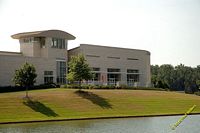 |
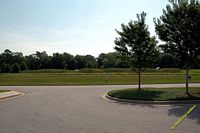 |
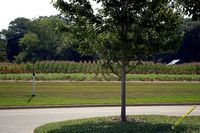 |
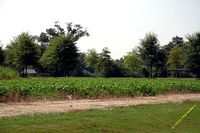 |
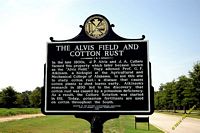 |
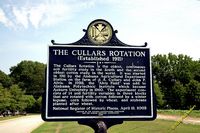 |
Heading North on College Street the next stop is the AU Arboretum. I walked just inside the gate and didn't spend much time in the gardens. That will be something to do on another trip to the Plains. :) The historical marker just inside the entrance reads, |
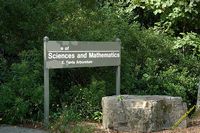 |
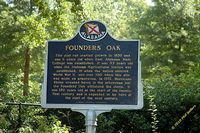 |
| Across the street from the Arboretum is the President's Home. |
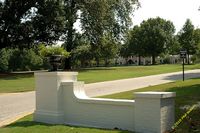 |
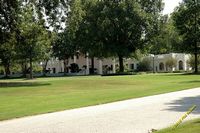 |
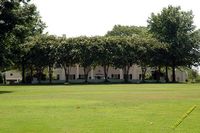 |
| Across the street from the President's Home (to the West) is a pretty, quiet little garden called the Garden of Memory. It was dedicated in 1953 in honor of Alabama Veterans from World War I, World War II, and the Korean War. |
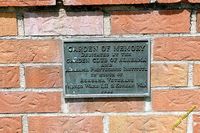 |
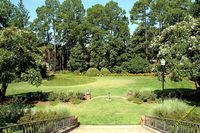 |
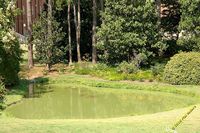 |
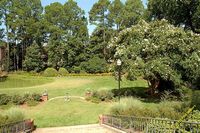 |
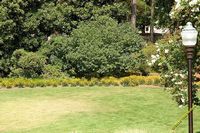 |
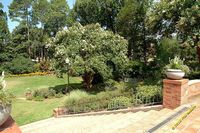 |
| This walk has 16 Tour Features and the next stop on the list is Price's Barbecue House. I've never eaten here, and didn't this day, but again, I have something to look forward to on another trip to the Plains. |
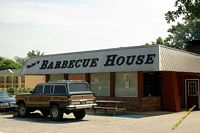 |
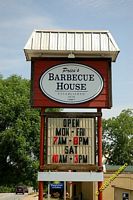 |
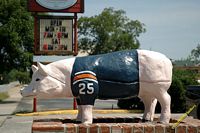 |
| Walking North you will pass by the Alumni office. The next feature is the Ralph Brown Draughon Library and across the street is The Hotel At Auburn University and Dixon Conference Center. |
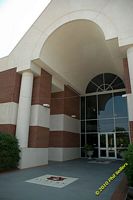 |
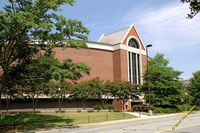 |
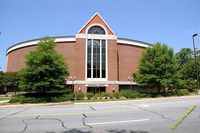 |
|
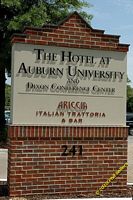 |
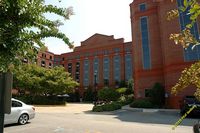 |
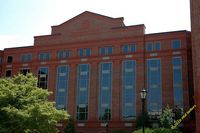 |
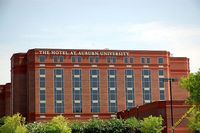 |
| Across the street from the hotel (next to the library) is an entrance to the Univeristy. Heading North on College is the Auburn University Chapel. The historical marker reads, "AUBURN UNIVERSITY CHAPEL In 1921, the Alabama Polytechnic Institute acquired the building which had been renovated in a Gothic style around 1900. Until 1926 it served a variety of social functions housing the U. S. O. and later the Y.M.C.A./Y.W.C.A., giving it the long time sobriquet the "Y" Hut. On July 27, 1926, the Auburn Players made their debut performance and until 1973 it was the University Theatre. In 1976, after extensive renovation designed by Professor Nicholas Davis, the old church re-opened as the University Chapel, an interdenominational, multipurpose building. During renovation, the hand-made trusses, girders and joists, slotted and pegged together, were discoverd. The new ceiling was built above this wooden network to highlight this original feature. The new entrance doors are replicas of the originals, as is the steeple. The beautiful old bricks were cleaned, repaired, and a new layer of mortar put into the joints. Landscaped walkways, and curving brick walls were all added. Funds for the project were given by the E. L. Spencer, Jr. family. It stands today as a blend of the old and the new, a reminder of Auburn's religious, academic, and social history. |
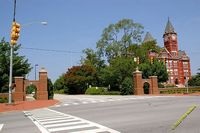 |
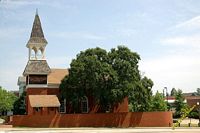 |
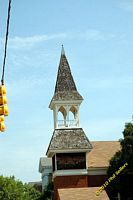 |
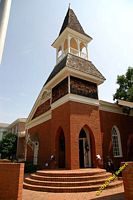 |
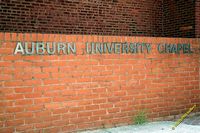 |
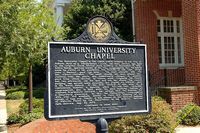 |
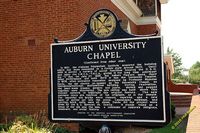 |
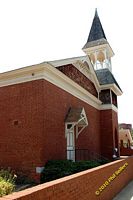 |
| Across the street from the Chapel is Samford Hall, one of the oldest buildings on campus. In front of Samford Hall is the famous Auburn University sign. |
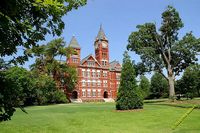 |
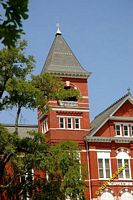 |
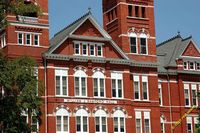 |
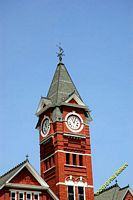 |
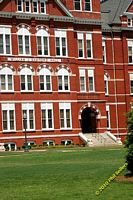 |
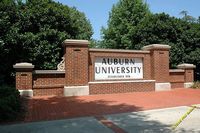 |
| Up, and across, the street from Samford Hall is J & M Bookstore, a beloved destination for Tiger fans everywhere! |
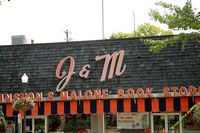 |
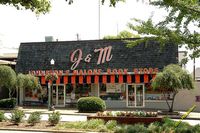 |
| Further up the street is the world famous Toomer's Corner. Here is a picture of the Oak trees that get rolled with toilet paper when an Auburn sports team has a big win. Caddy corner to the oaks is Toomer's Drugstore. Among other things they are famous for their lemonade. Next door is Auburn Art, the next stop on the hike. |
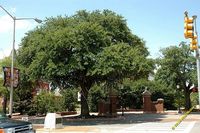 |
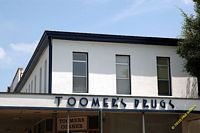 |
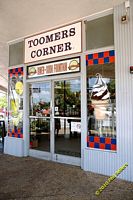 |
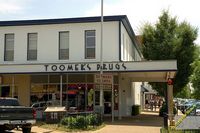 |
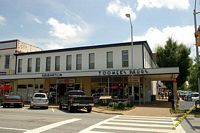 |
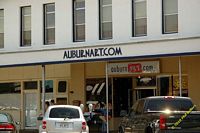 |
| Across the street from Toomer's and Auburn Art is the building for the former Bank of Auburn. Outside is another historical marker that reads, "TOOMERS CORNER AND THE BANK OF AUBURN This famous intersection, now known as Toomers Corner was named for businessman and state Senator Sheldon Toomer who founded the Bank of Auburn here in 1907. He served 45 years as bank President and 25 years on the Auburn City Council. Toomers Corner is adjacent to Auburn University's historic Main Gate and a tradition to generations of Auburn University students who gather to celebrate the "Auburn Spirit". The Bank of Auburn building constructed in 1906 features a limestone base and original nameplate topped by a classic revival brick facade that serves as the cornerstone for downtown Auburn." |
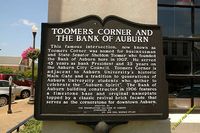 |
| The next two tour features are just up the street. The first one is Mellow Mushroom (a pizza restaurant) and Cheeburger Cheeburger (a hamburger restaurant). |
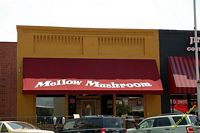 |
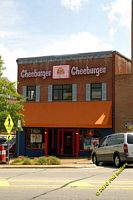 |
| The next stop on the hike is City Hall, but somehow I managed to walk past it and stumbled upon the Municipal Complex. |
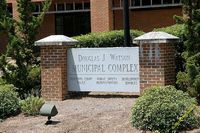 |
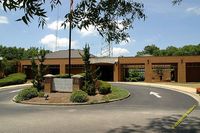 |
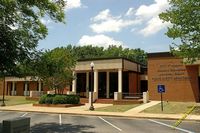 |
| Around the corner from the Municiple Complex is Fire station #1. Outside is one of the tigers that you will find scattered around the city and University. |
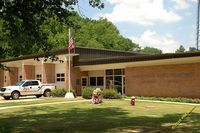 |
 |
|
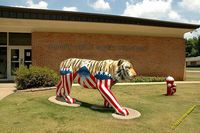 |
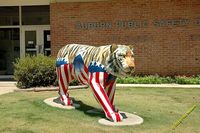 |
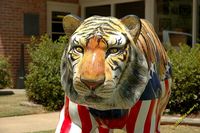 |
| Up the street from the fire station is a historical marker dedicated to Robert Wilton Burton. It reads, "ROBERT WILTON BURTON 1848 - 1917 Near this site once stood "Four-Story Cottage," the home of Robert Wilton Burton. A one-story house with wide porch and bay window, Burton built it in 1885 with proceeds from the sale of four stories to children's magazines. Born in Camden County, Georgia, Burton grew up in Lafayette, Alabama where he began writing stories for the newspaper, on various subjects. In the early 1870's, with his brother, he opened a bookstore in Opelika, Alabama. In 1878, at the request of the Agricultural and Mechanical College of Alabama, Burton opend the first bookstore in Auburn. It was soon known as the "Coffee House of the College City." On the reverse it reads, "ROBERT WILTON BURTON Burton wrote numerous local color stories for national magazines and newspapers. Many of his best tales, in Negro dialect, feature "Marengo Jake" Mitchell, a former slave in Auburn known for his tall tales. In 1991 these stores were published as De Remnant Truth. An active Presbyterian, Burton also served as Secretary of the Town Board of Education, County School Superintendent, Clerk of the Town Council, and Secretary to the College Board of Trustees. His bookstore was sold in 1968; his home dismantled in 1993." |
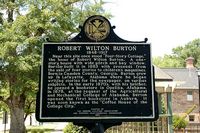 |
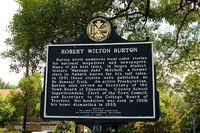 |
| Walking down Gay Street you will come upon Wittel Dormitory. The historical marker reads, "WITTEL DORMITORY Wittel Dormitory has long been admired as one of Auburn's most significant examples of classic nineteenth-century design. Built in the early 1900's by Samuel S. Wittel to house professional women, it also served as a home for three generations of the Wittel Family. After World War II enrollment at the Alabama Polytechnic Institute, which is now Auburn University, rose dramatically and Wittel became Auburn's first dormitory for college women. The original structure features copper roof details, wood floors throughout, silver plate applied to the front entrance ceilings and Auburn's first elevator." |
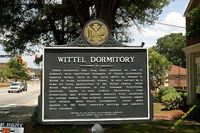 |
| Walking down to Armstrong Steet and then heading South you will come upon Pine Hill Cemetery. This cemetery was established in 1837 and is the oldest cemetery in Auburn. The historical marker here reads, "PINE HILL CEMETERY Pine Hill was established in 1837 and is the oldest cemetery in Auburn. Judge John J. Harper, Auburn's founder, donated almost six acres to the new town to be used as a community burying ground for white settlers and their slaves. The original part of the cemetery lies to the north and contains the oldest marked grave-1838. Early cemetery records are nonexistent as the first survey was conducted in the 1950's when over 1,100 marked graves were cataloged. Of this number only one black grave is identified. A cross section of Auburn citizens are buried here including University presidents and slaves. In the 1870's a separate black cemetery, Baptist Hill, opened to the southeast. For decades Pine Hill served as the primary burying ground for whites in the area. The city's Confederate marker rises at the rear of the cemetery over the common graves of 98 Texas soldiers who died in a temporary hospital housed in a college building known as "The Main." Pine Hill suffered from vandalism and neglect until 1995 when the Auburn Heritage Association launched a restoration of the cemetery. It was placed on the Alabama Register in 1978 and is owned and maintained by the City of Auburn." |
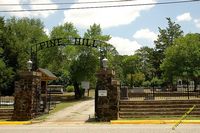 |
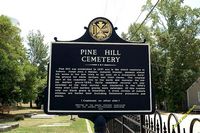 |
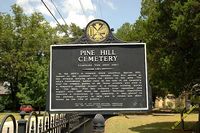 |
| Walking down Armstong you turn towards Gay Street again, heading South. Here you will find the last of the hiking features, the Amsterdam Cafe. Here's a picture of the cafe along with one of the shops next to it. Continuing South on Gay street you will arrive back at Town Creek Park. |
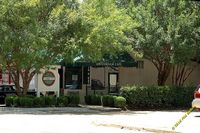 |
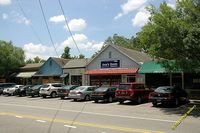 |
Last Updated: March 23, 2012
Updates to this page:
|
|
|
| Questions or comments? |
| All content and images © Copyright 2010 - 2012 Phil Sellers |